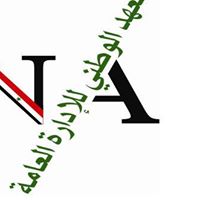اشترك بالحزمة الذهبية واحصل على وصول غير محدود شمرا أكاديميا
تسجيل مستخدم جديدLoss-tolerant operations in parity-code linear optics quantum computing
222
0
0.0
(
0
)
اسأل ChatGPT حول البحث

ﻻ يوجد ملخص باللغة العربية
A heavy focus for optical quantum computing is the introduction of error-correction, and the minimisation of resource requirements. We detail a complete encoding and manipulation scheme designed for linear optics quantum computing, incorporating scalable operations and loss-tolerant architecture.
قيم البحث
اقرأ أيضاً
The scalability of photonic implementations of fault-tolerant quantum computing based on Gottesman-Kitaev-Preskill (GKP) qubits is injured by the requirements of inline squeezing and reconfigurability of the linear optical network. In this work we pr
opose a topologically error-corrected architecture that does away with these elements at no cost - in fact, at an advantage - to state preparation overheads. Our computer consists of three modules: a 2D array of probabilistic sources of GKP states; a depth-four circuit of static beamsplitters, phase shifters, and single-time-step delay lines; and a 2D array of homodyne detectors. The symmetry of our proposed circuit allows us to combine the effects of finite squeezing and uniform photon loss within the noise model, resulting in more comprehensive threshold estimates. These jumps over both architectural and analytical hurdles considerably expedite the construction of a photonic quantum computer.
We investigate a scheme for topological quantum computing using optical hybrid qubits and make an extensive comparison with previous all-optical schemes. We show that the photon loss threshold reported by Omkar {it et al}. [Phys. Rev. Lett. 125, 0605
01 (2020)] can be improved further by employing postselection and multi-Bell-state-measurement based entangling operation to create a special cluster state, known as Raussendorf lattice for topological quantum computation. In particular, the photon loss threshold is enhanced up to $5.7times10^{-3}$, which is the highest reported value given a reasonable error model. This improvement is obtained at the price of consuming more resources by an order of magnitude, compared to the scheme in the aforementioned reference. Neverthless, this scheme remains resource-efficient compared to other known optical schemes for fault-tolerant quantum computation.
We use a combination of analytical and numerical techniques to calculate the noise threshold and resource requirements for a linear optical quantum computing scheme based on parity-state encoding. Parity-state encoding is used at the lowest level of
code concatenation in order to efficiently correct errors arising from the inherent nondeterminism of two-qubit linear-optical gates. When combined with teleported error-correction (using either a Steane or Golay code) at higher levels of concatenation, the parity-state scheme is found to achieve a saving of approximately three orders of magnitude in resources when compared to a previous scheme, at a cost of a somewhat reduced noise threshold.
We discuss codes for protecting logical qubits carried by optical fields from the effects of amplitude damping, i.e. linear photon loss. We demonstrate that the correctability condition for one-photon loss imposes limitations on the range of manipula
tions than can be implemented with passive linear-optics networks.
We analyze the latency of fault-tolerant quantum computing based on the 9-qubit Bacon-Shor code using a local, two-dimensional architecture. We embed the data qubits in a 7 by 7 array of physical qubits, where the extra qubits are used for ancilla pr
eparation and qubit transportation by means of a SWAP chain. The latency is reduced with respect to a similar implementation using Steanes 7-qubit code (K. M. Svore, D. P. DiVincenzo, and B. M. Terhal, Quantum Information & Computation {bf 7}, 297 (2007)). Furthermore, the error threshold is also improved to $2.02 times 10^{-5}$, when memory errors are taken to be one tenth of the gate error rates.
سجل دخول لتتمكن من نشر تعليقات
التعليقات
جاري جلب التعليقات


سجل دخول لتتمكن من متابعة معايير البحث التي قمت باختيارها


